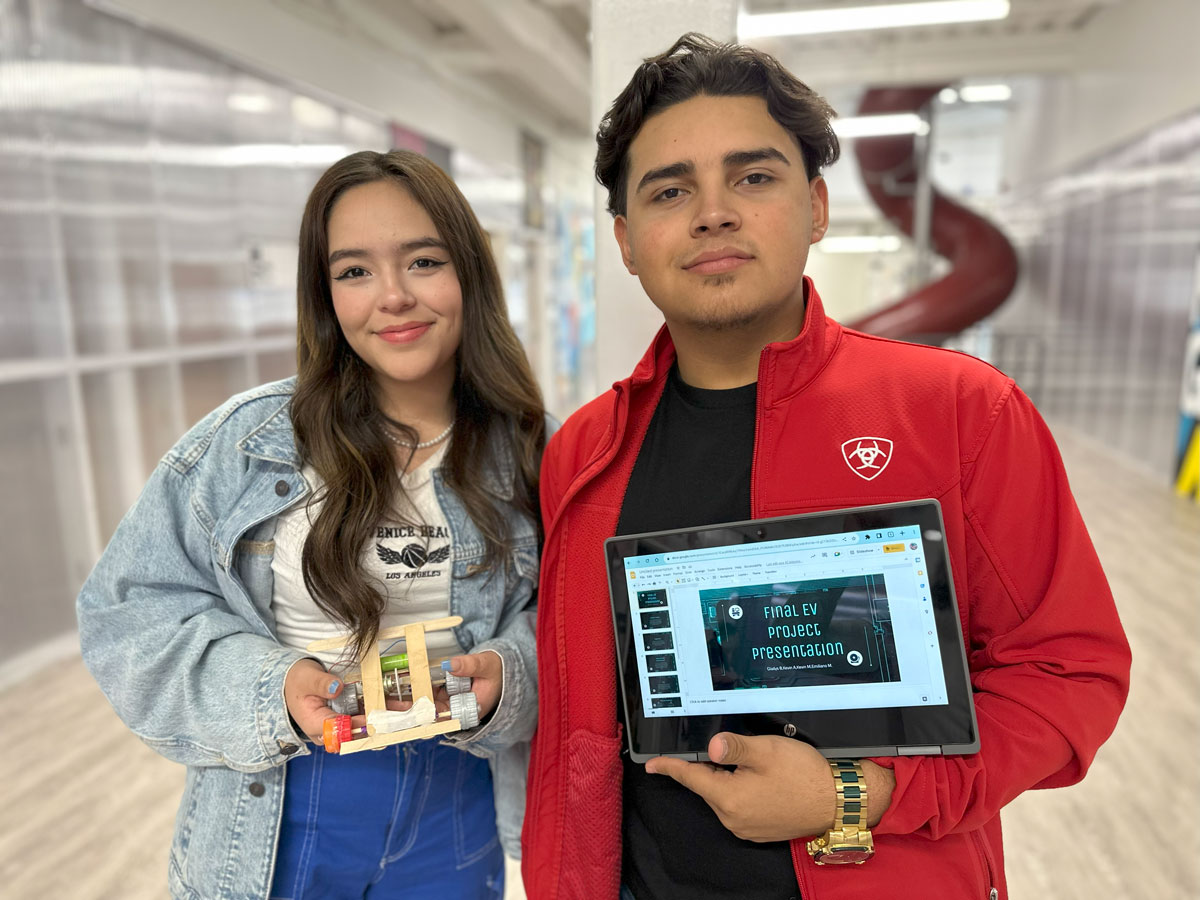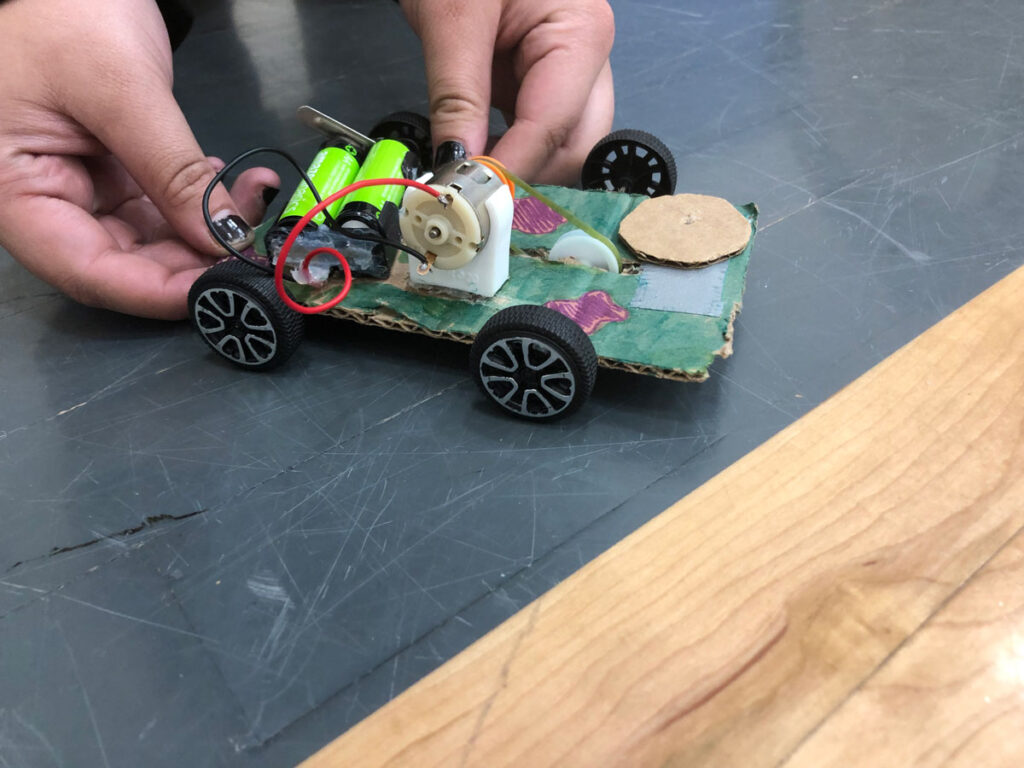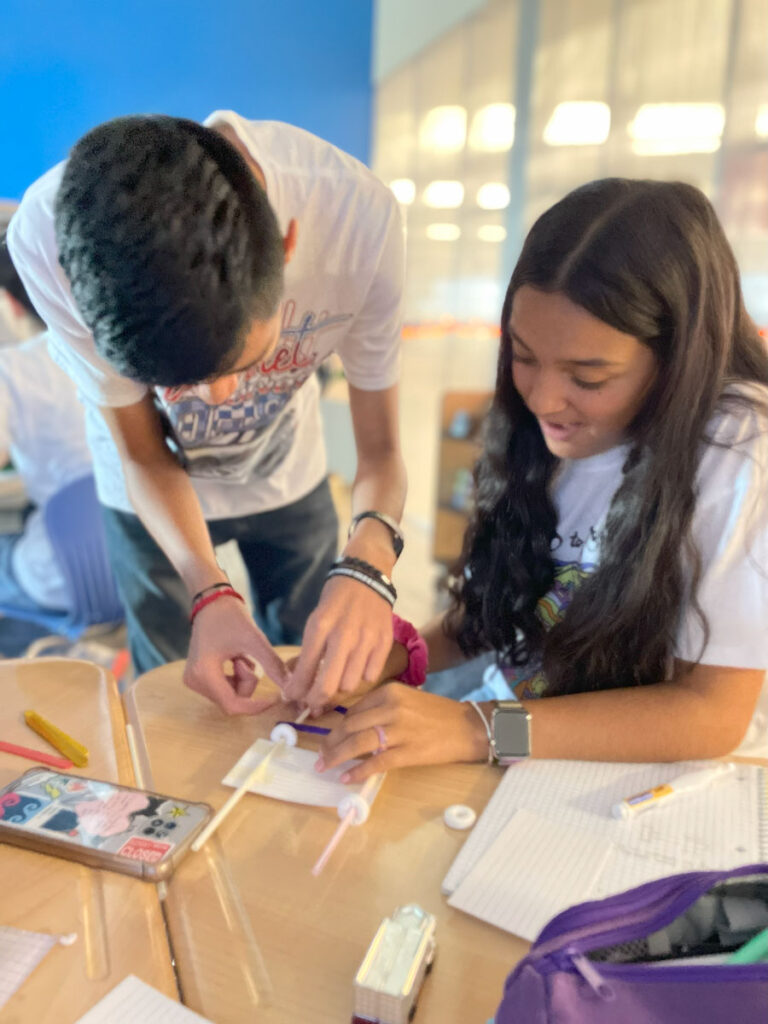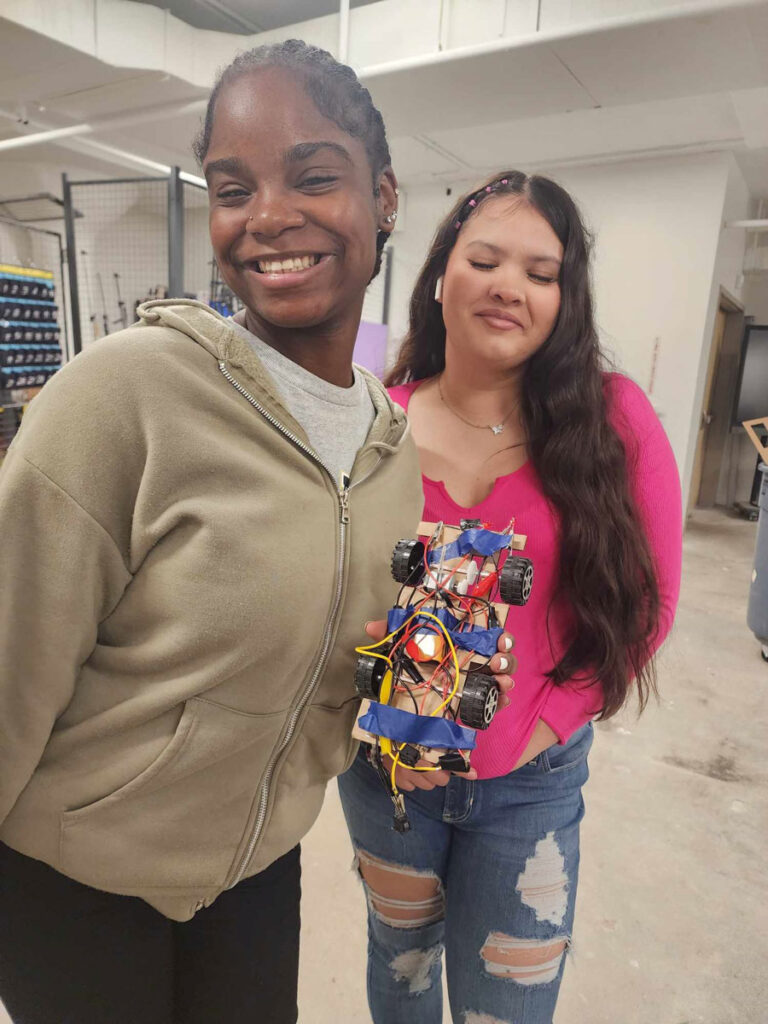Teaching the ‘E’ in STEM

Many individuals begin evaluating their future career at a very young age. This is why career days and fairs begin in elementary school — to ensure that pre-college students have early access to information about a wide variety of careers.
“We know that by grade five, if not earlier, students already have an idea of what they want to do when they grow up — that’s like peak career identity,” said Jennifer Ramos-Chavez, the nonprofit project manager program coordinator at ASPIRE who formerly worked on the Pathways project at Utah State University. “We’re starting to see more and more engineering education, as early as in elementary school. Of course, it might not be introduced as ‘engineering’ per se, but some of the context and the competencies overlap, so they have that introduction.”
A recent Gallup article shows that students exposed to four or five technology-related topics in school are 5.3 times more likely to pursue a STEM career. With an expectation of 1.4 million technical STEM jobs anticipated to be open by the end of 2030, there is a rising need to ensure these meaningful STEM opportunities are provided to students, according to Semiconductor Industry Association and Oxford Economics.
ASPIRE’s Co-Director of Electrification Workforce Development Matt Ohland added that these experiences are valuable even beyond students who choose a STEM career.
“It’s important to have some content focused on engineering and what engineers do — even for students who will never pursue technical careers,” Ohland said. “This education can dispel the myths around engineering and create citizens who understand the role of engineering in society.”

Making Engineering Approachable for Every Educator
Despite the rising need and popularity of STEM in the classroom, it can be difficult for teachers to feel confident teaching these concepts in the classroom, as most teachers are not engineers — the “E” in STEM. This educator-level imposter syndrome was experienced first-hand by former science teacher Jennifer Taylor, the pre-college engineering director at the University of Colorado-Boulder and researcher in ASPIRE’s Pathways project.
“I am not an engineer; I’m an educator,” Taylor said. “All you need to do is have the willingness to learn, use your creativity, and get the support that you need.”
And that’s where ASPIRE comes in.
“We’ve learned that the resources for professional development in teaching engineering are very limited,” Ramos-Chavez said. “We are very conscious about how we can fill the gaps from multiple angles to support the effort to make students aware of opportunities, then also inspire students to be more intrigued by engineering.”
To fill these gaps, ASPIRE creates curricula, such as the ASPIRE K-12 Hub on Teach Engineering (TE) — a platform accessible by 3.3 million teachers and students.
“Our focus is taking the needs ASPIRE is trying to address, then getting that into the schools, into students’ mindsets, by getting teachers engaged. We create a plug and play, vetted curriculum that is standards aligned and engaging to students,” Taylor said. “It’s building teachers’ experience, confidence, and access to resources in K-12 engineering education.”
Taylor added that the availability and usability of resources such as these both allowed her to see what scientist and engineers do and changed her experience as an educator.
“When I was a new STEM educator, having resource and instructional support made me realize that, yes, I can teach the ‘E’ in STEM,” she said. “Engineering education is about being a creative learner, a problem solver, and collaborator with others. Engineering is the application of science, technology, and math to make the world a better place.”


Creating Meaningful Learning Experiences
According to Taylor, a priority for ASPIRE moving forward is dedicated efforts to provide meaningful learning experiences, especially through the recently funded Pre-College Explorations Into Electric Vehicles and Wireless Charging affiliated project in partnership with NREL and the City and County of Denver Office of Climate Action, Sustainability, and Resiliency, thanks to grant support from the Colorado Department of Transportation.
“This curriculum is really focusing on what’s unique about ASPIRE, and that is wireless charging, whether it’s static or dynamic,” Taylor said. “We will engage students in understanding how electrified roadways work and what the benefits of these systems are.”
To kick-off this four-part project, ASPIRE will create multiple EV wireless dynamic charging model tracks, followed by other prototypes, demonstrations, and kits to make these experiences both engaging and available to students, no matter their location. The project will culminate with a transportation mobility Expo, followed by further opportunities to engage the community.
“Within this cool alternative transportation Expo, next May 2026, we will have all of these resources available that students in the community can engage with,” Taylor said. “This project is not just for K-12. It’ll definitely help with that, but we’re hoping that there can be a bigger impact on the community as well.”
For more information about ASPIRE’s efforts to support educators in engineering education, contact Jennifer Ramos-Chavez or Jennifer Taylor, or explore the ASPIRE K-12 Hub on Teach Engineering.
About ASPIRE:
ASPIRE, a National Science Foundation Engineering Research Center headquartered at Utah State University, leads groundbreaking research and development to accelerate electrification. With over 400 global collaborators, ASPIRE focuses on creating seamless, affordable electrified transportation systems, accessible for all vehicle classes, along with the public infrastructure needed to support them. By reducing emissions, improving air quality, and fostering economic growth through job creation and workforce training, ASPIRE’s work spans engineering, social science, policy, and business. Partnering with top universities, industry leaders, and community groups, ASPIRE is driving the future of advanced transportation. Learn more at aspire.usu.edu.
Contacts:
Jennifer Ramos-Chavez
Nonprofit Program Manager
ASPIRE ERC
Jennifer Taylor
Pre-College Engineering Director
University of Colorado Boulder
Writer:
Kayleigh Kearsley
Marketing & Communications Intern
ASPIRE ERC